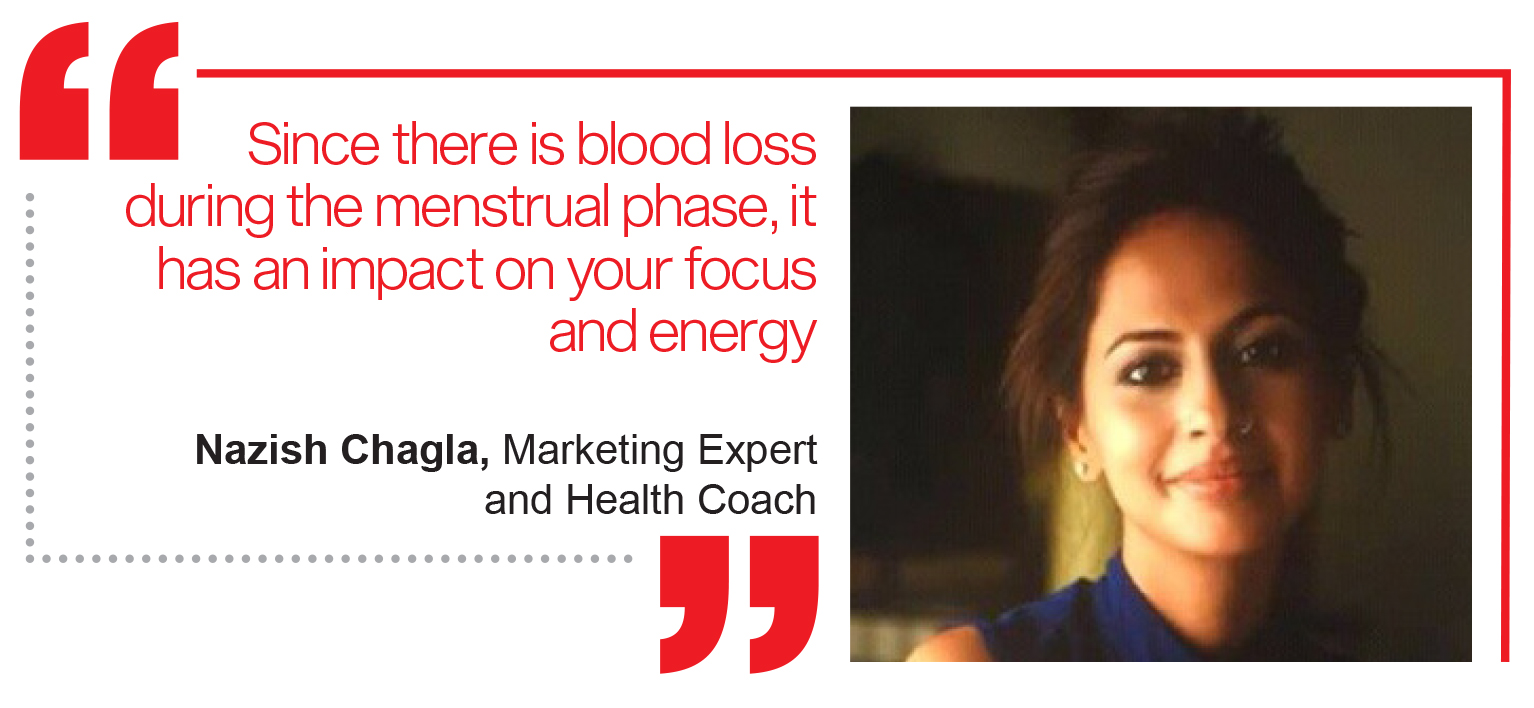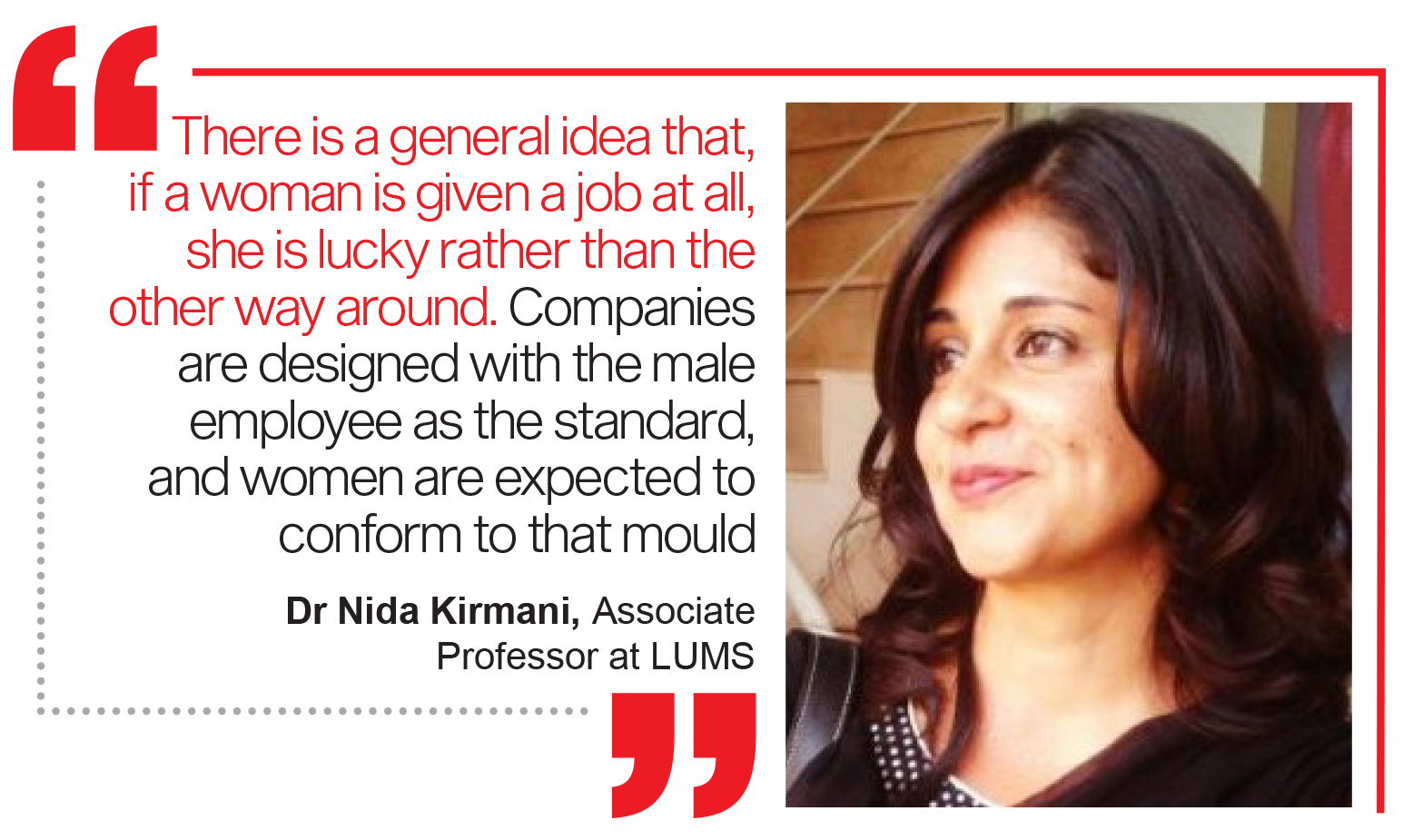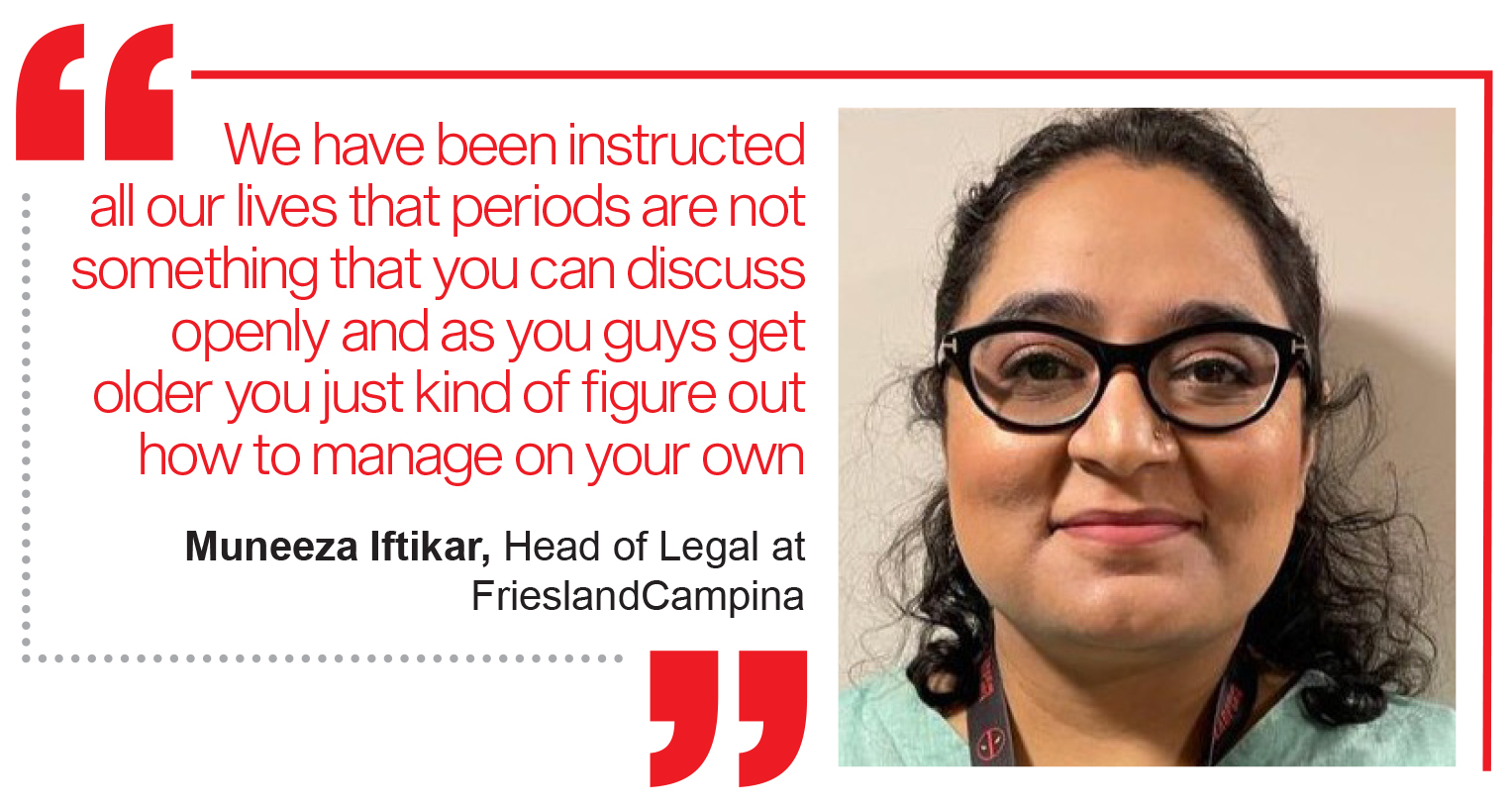Have you ever experienced crippling pain along with extreme mood swings that made you feel like you’ve lost control of both mind and body? And despite this hell breaking loose within you, have you ever ‘(wo)manned up’ and gone to work?
If not, you are probably one of the lucky ones or maybe, you are a man. If yes, you should have been allowed to take a sick day, or two.
If Covid-19 has taught us anything, it is that the 9-to-5 grind is not the only possible model for working; there can be various other, and even more productive approaches to work schedules. We tend to forget that these hours were born out of necessity of the economic circumstances of the early 20th century, but that is not the natural order of things.
The world was forced to reset after the pandemic, transforming to accommodate the labour force better. In the post-Covid world, countries are moving towards remote working, flexible work hours and four-day working weeks, which has proven to improve employee satisfaction and productivity. Countries, including Japan, Taiwan, Indonesia, South Korea, Zambia and most recently Spain (becoming the first European country to join the initiative), have laws that allow women, who experience severe physical and emotional menstrual symptoms, to take paid menstrual leaves of up to three days.
While these are examples of how human societies evolve to serve the need of the hour, some societies are slow to adapt to these changes. Ours is a prime example of this.

As others continue to progress, Pakistan remains way behind, not just in terms of employee wellness, but also inclusivity, diversity and equity. Currently, Pakistan is ranked as one of the lowest in South Asia and globally for women’s participation in the workforce, with only 20% of women employed in the formal sectors. Moreover, according to the United Nations’ Gender Gap Index Report 2022, we are one of the worst countries in terms of gender inequality, ranking 145/156 for economic participation and opportunity, 135/156 for educational attainment, 143/156 for health and survival, and 95/156 for political empowerment.
You may wonder why, when the rest of the world is progressing, do we remain stagnant?
Well, these conditions were not bred in a vacuum, but have resulted due to several socio-cultural and economic factors. One such factor is our out-dated corporate culture that largely ignores women’s health and wellness, actively keeping women out or making them eventually drop out of the workforce. It can be argued that the 9am to 5pm model is an inherently patriarchal system, designed by men for men.
The female hormone cycle and its incompatibility with the 9am to 5pm model
It is fair to ask why the eight-hour workday model has lasted so long when it is inherently flawed? The simple answer is that it was not designed keeping women and other gender minorities in mind. It has worked for so many years because it suited men who do not have as many domestic, child-care and emotional responsibilities as women do.
However, when women started entering the workforce, this system created more problems than one, limiting them from excelling in the corporate world.
Why?
Apart from the various social, cultural and economic factors, which are often the topic of debate, there are various biological reasons that inhibit the way women work and how they are treated when they suffer. Male and female bodies, as well as hormone cycles are quite dissimilar. Whereby, men have a 24-hour hormone cycle that is highly compatible with the traditional 8-hour workday starting in the morning, women, on the other hand, have a 28-day cycle. Let’s break it down.

According to Dr Allison Devine, Board Certified Ob/Gyn at the Austin Diagnostic Clinic and Faculty at Texas A&M Medical school, men wake up every morning with testosterone and cortisol levels at their highest. This enables them to be focused, energetic and ready to take on the day. They experience high levels of productivity and efficiency due to these hormones. By afternoon, their testosterone levels drop slightly, putting them in a mood most suitable for social interactions and networking. As the day bleeds into night, testosterone levels dip and with them the productivity and energy also diminishes, ideally putting them in a state of relaxation. So men wake up every morning, work throughout the day, and kick back and relax in the evening, with their hormones assisting them at every stage of their day.
Contrastingly, the female cycle has four phases. The menstrual phase, as the name suggests, is when women menstruate, having low levels of energy, ideal for low effort tasks, such as resting and reflecting. Then comes the follicular phase, wherein, creativity flows, proving suitable for exploring ideas, planning and engaging in creative pursuits. Next is the ovulatory phase, during which testosterone levels are the highest, therefore, making it best suited for socialising and networking. Lastly, there’s the luteal phase, which is the highest productivity period, ideal for performing focused tasks and organisation.
These hormonal phases can act as a useful map to arrange thinking, planning, executing and completing projects. So, instead of planning tasks on a day to day basis, if women were allowed the flexibility to create their own schedule, based on their hormonal phases, they could work more productively.
Marketing Expert and Health Coach extraordinaire Nazish Chagla explained that, “The premenstrual and menstrual phases are the most difficult ones, when progesterone, which is responsible for keeping you calm and composed, is declining rapidly. This brings about a huge shift in mood and productivity. Meanwhile, oestrogen is also not at the highest during this time, making the menstrual phase good for slowing down and resting. The best time to start a new project is the follicular phase because testosterone and oestrogen are peaking, making you more creative and productive. The luteal phase is when you want to go the haul and get difficult tasks done.”

Chagla added, “However, there are other things to consider, as well. Since there is blood loss during the menstrual phase, it has an impact on your focus and energy. This does not apply to working out because it is interestingly a good time for exercise and you can have good gains during this time but it is not ideal for working on other tough tasks.”
This gives us sufficient grounds to claim that the 9-to-5 model is not, in fact, the best model for women. Even for those, who may not experience severe, disabling menstrual symptoms that necessitate menstrual leaves, the 9-to-5 might be an obstructive and counter-productive model.
Women are equally important economic agents as men and if a work culture that is better suited to their unique biochemistry is incorporated, giving them the freedom to plan their tasks according to their hormone cycles, they can be far more productive and efficient.
The triple shift
Women’s fluctuating biochemistry is not the only factor that makes the 9-to-5 model toxic for them. Beyond biology, there are other socio-cultural constituents that hinder women’s performance when they work strictly between 9am and 5pm. Our society is marred with patriarchal values that often expect women to shoulder the majority of domestic responsibilities in addition to their professional obligations.
A ‘good’ woman is expected to wake up early, prepare breakfast for the entire family, pack lunch boxes, send the kids to school, and then go to work. She is also expected to maintain a clean house, have steaming food ready, and fulfil the emotional needs of her family. If she can juggle all these duties and still hold a job, great. She is applauded. She is cited as an example of women who can do it all, have it all.
But if she can’t, she is often expected to quit her paid employment and devote her life to her primary job as a mother and wife. Meanwhile, men are seen as the breadwinners of the family and encouraged to relax after work hours are complete.
According to Faiza Ali, Associate Professor at LUMS, “the whole argument is that daytime is for work because you can work at your full potential. So you start working in the morning and way into the evening and then rest at night when it gets dark. However, it doesn’t fit well with women’s responsibilities, especially in the context of Pakistan.”

Along with these responsibilities, Ali points out other aspects of our culture that create circumstances that either don’t allow women to work, limit them to select few sectors, or produce substandard quality of work. Poor performance at the office then bolsters gender stereotypes, such as women were not made for this work. Ali also notes that a joint family system often doesn’t favour women working in paid employment that requires them to be away from home from morning to evening, the most important hours of the day.
In an economic crisis like the current one, with monthly CPI surging to 31.5% year on year, women will have to enter the workforce because it is becoming increasingly impossible to run a household with one income. However, the multifold burden that falls on women will also not fix itself, placing them at an even greater disadvantage. If a woman does unpaid domestic labour, her work goes unrecognised. But if she works in a corporate office, she is accused of neglecting her family. There is a dire need for more accommodating working hours that can allow women to strike a balance between their personal and professional lives without having to choose one over the other.
Abandoning the chicken and egg problem
Why does Pakistan not have inclusive policies? It is impossible to answer this without opening a pandora’s box.
We can question whether Pakistan’s corporate ecosystem lacks inclusive policies because there aren’t many women in the workforce for there to be a need to assist them? Or is it the other way round and the percentage of women in the workforce is so low because the lack of mechanisms for inclusivity and diversity is industriously keeping them out? There are many different ways to ask this question and they will all bring us to the same chicken and egg problem. And it doesn’t matter whether the workplace is discriminatory against and ignorant of women’s needs by design or accident.
All these questions are rendered bootless when we admit that women have been entering or willing to enter the workforce for quite a while now, yet little is being done to make the workplace more gender inclusive and equitable.

So, the question then is, why have we failed to come up with a solution?
According to Dr Nida Kirmani, Associate Professor of Sociology at LUMS, “It is a combination of ignorance and a simple lack of care. There is a general idea that, if a woman is given a job at all, she is lucky rather than the other way around. Companies are designed with the male employee as the standard, and women are expected to conform to that mould.” So, women are largely ignored when designing HR policies and incorporating inclusive practices.
The Head of Legal at FrieslandCampina Muneeza Iftikar believes that there are two major problems, when it comes to issues concerning diversity in organisations. “First is simple; most organisations have men in senior management positions, and it all boils down to a lack of knowledge regarding issues concerning women. This is not something they are just not willing to do, rather they don’t think about it, so at times it has to do with lack of awareness of the kinds of issues women face.”
Iftikar shared an anecdote from almost a decade ago to elaborate on her assertion. “I remember one of my previous employers wanted to see why they were unable to retain female talent, so they decided to conduct a focus group, where they got different employees, including senior, junior, married, or single and male or female to come together and closely consider different aspects of the business. We were talking about whether we should have a daycare and flexible timings and whatnot.”
“One of the only female engineers on site had joined us and while this discussion was happening, she raised her hand.. She was expecting a baby, while working and living on the site. The site had just one female toilet on the opposite end of the plant and because of the nature of the plant you couldn’t just walk around in it. There used to be a van that took you around because it was a dangerous facility. She told us that she had to spend the whole day waiting for that van for one or two bathroom trips during the workday but because she was pregnant, she required using the loo more often than before. And the issue was that a lot of her time would be spent waiting for the van and then going to the training building, then to the bathroom and then coming back.” Iftikar continued.
“I can never forget the look on the CEO’s face. We spent millions on conducting other diversity initiatives, without realising that our one main female employee doesn’t have access to basic bathroom facilities. So, at times there are problems as simple as this and we miss them because women are not a part of the conversation,” Iftikar concluded.
So, the problem is also having an incorrect approach to incorporating inclusivity.
Iftikar gave the example of the Maternity Act 2020, to elaborate upon her argument that if men continue to make decisions for women, even with positive intentions, the results will never be satisfactory. “It is the most horrifically drafted legislation I’ve ever seen. It states that if an organisation has 10% females, you must have a daycare. Now the problem with this is that our organisation, for example, has a 6% female population, so it’s not mandatory for us to have daycares…”

But this is not all. “The other side of the problem is that a lot of the time it depends on how good or bad your relationship with the senior management is. When you have a good relationship with the management, it is easier to highlight the problems that exist, and they do try to work out a solution.”
However, Iftikar also opined that talking about women’s health ‘turns a lot of people off’. “Especially older but also younger gentlemen get a bit uncomfortable and don’t want to discuss it. I once proposed that free sanitary pads should be put in the office bathroom,” she shared but the reluctance of her superiors came in the most absurd form of excuses. “What if the pads get stolen” and “We can’t do it due to budget issues” or “We don’t wanna talk about it, this is something which makes us uncomfortable,” are some of the questions they asked.
Imagine discussing the concept of premenstrual dysphoric disorder with them.
“We have been instructed all our lives that periods are not something that we can discuss openly and as you guys get older you just kind of figure out how to manage on your own,” Iftikhar told Profit. But even if you can somehow grow past the shame that is associated with any discussion around the topic, the reaction is one of men baulking at the thought of providing a solution.
Beyond policies and legislations, there is a pressing need for a mindset shift.
According to Iftikar, one of the most important things that we need to acknowledge, which often goes against women, is their ability to find alternatives on their own. Women stick together, rely on each other and often create spaces for themselves. As wholesome and endearing as this sisterhood is, it relieves the organisation from the obligation to consider women’s issues.
What can we do?
The struggle for work-life balance is an ongoing battle for women around the world, but in Pakistan, it is a fight that is both urgent and complex. As women continue to fight for their rights, experts from different fields have offered their insights to Profit on what needs to be done to achieve a more equitable workplace.
According to Dr Ghazna K Siddiqui, a Consultant Obstetrician Gynaecologist and International Women’s Health and Health Advisor for the Government of Pakistan, “Fixed menstrual leaves can be helpful, but they may lead to positive discrimination. What we can have is flexible working hours and weeks that allow women to plan ahead and arrange their schedule, such that they don’t have as much workload during the days they are menstruating. Moreover, one good thing that came out of the pandemic is remote working, and if the nature of your job allows it, employers should be willing to let you work from home.”
However, Dr Nyla Ansari, an Assistant Professor and Chairperson of the Management Department at IBA, believes that there is no “one-size-fits-all” solution. “Certain jobs require you to be on the ground, so you cannot work from home. Women know when to expect their period, and if they can plan ahead and manage their tasks accordingly, it would not only benefit them, but their employers will also be better prepared.”
The need for action goes beyond just individual efforts. Kirmani believes that “we definitely need better laws and policies to ensure that workplaces are gender equitable. This includes protections against discrimination and general family leave policies, which include both maternity and paternity leave. In general, more flexible approaches to employment, which would include options to work from home and daycare facilities, would be more beneficial for women and men.”
The need for change is urgent, and the solution must come from a multifaceted approach. It requires inclusive HR policies, better laws and policies, and flexible working hours to ensure that women have the support they need to achieve a work-life balance. Ali shared that “Dutch women’s economic participation rate is quite high, even though their culture is very home-focused. So, in Scandinavian countries equality is quite common. They came up with the idea of part-time work, and that’s what I think is very important in the context of Pakistan as well.”
A beacon of hope in the war-stricken future
Amidst these myriad challenges, there is hope on the horizon. A handful of local and multinational companies are leading the way in creating a more inclusive work environment, setting an example for others to follow.
Take HBL, for instance. This financial institution is committed to raising its female workforce from 17.7% in 2020 to 20% in the future, with a focus on recruiting women for junior level positions. Moreover, it has introduced the NISA banking account, which aims to increase women’s financial inclusion from 5% to 25%.
Shell Pakistan, in collaboration with the National Rural Support Programme, has established a Business Center for Women in Bahawalpur, offering enterprise development sessions designed specifically for women. The “She in Shell” programme is dedicated to providing employment opportunities for women who have taken a career break.
On the multinational front, Unilever and P&G are leading the charge in promoting gender equality in their Pakistan divisions. Unilever boasts a management team that is 52% female, and offers 16 weeks’ paid maternity leave as a minimum worldwide, including in Pakistan. P&G’s Gender Equality initiative, under the #WeSeeEqual programme, includes the HOPE programme for women’s skill development and girls’ education, as well as a commitment to mentor 500 women under Million Women Mentors.
A study by Salas-Vallina et al (2020) indicates that there is a positive correlation between happiness at work and how well employees can sell additional products in the banking industry. Another study by Bellet et al (2019) finds similar results. What does this mean? Companies are leaving money at the table, if nothing else, by continuing to ignore their female talent and their wellness.
The traditional approach of treating employees as mere machines, disconnected from their own bodies and families, is outdated and detrimental to overall workplace morale. By adopting a more holistic and empathetic approach to employment, companies can create a workplace culture that supports and uplifts all employees, leading to greater job satisfaction, productivity, and ultimately, success. So, departure from the 9-to-5 not only helps women, but has far-reaching benefits for the overall economy.

























I work from 8 a.m to 5 p.m, but I feel really asleep in the morning and energetic at night. Therefore, my ‘cycle’ of work is opposite to other people.
ARE YOU A VICTIM OF CRYPTO SCAMS AND WANT TO GET BACK YOUR STOLEN CRYPTOS!!
Am here to testify the handwork of A Great Verified Hacker ( Mr Morris Gray )Who helped me recover back my lost funds from the hands of scammers who Ripped me off my money and made me helpless, I could not afford to pay my bills after the whole incident, But a friend of mine helped me out by given me the contact info of trusted Recovery Expert, his email: Morris gray 830 @ gmail . com contact him or chat him up on (+1- /607-69 )8-0239 ) and he will help you recover your lost funds If you have been a victim of any binary/ cryptocurrency or online scam, Mobile spy, Mobile Hack contact this Trusted and Verified hacker, He is highly recommendable and was efficient in getting my lost funds back, 11btc of my lost funds was refunded back with his help, He is the Best in Hacking jobs, contact him ( MORRIS GRAY 830 AT) GMAIL (DOT) COM..